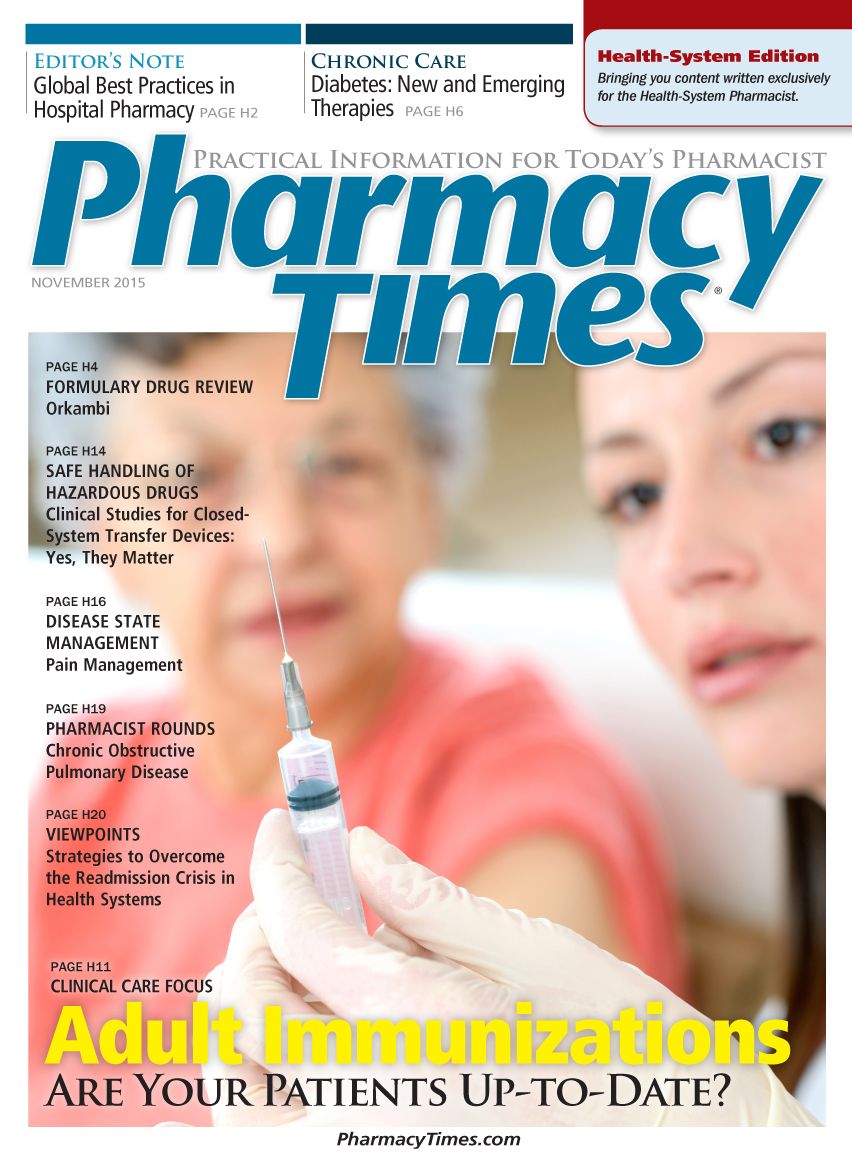Publication
Article
Pharmacy Practice in Focus: Health Systems
Global Best Practices in Hospital Pharmacy
Every pharmacy leader needs to be aware of all regulations and standards that impact their organization.
In September 2015, the hospital pharmacy section of the International Pharmacy Federation (FIP) released the revised Basel Statements. Originally developed in 2008, these standards were created to guide global hospital pharmacy practice. Although certain countries, such as the United States, have had the benefit of a strong association to guide the development and dissemination of professional standards, this is not true for all countries. Because of this variation of practice, FIP has taken the leadership role in developing global standards. The Basel Statements originally consisted of 75 statements describing best practices.
After years of promotion and use worldwide, these standards were updated because new practices have emerged over time that were not incorporated into these statements, some statements came to be seen as too technical, and some statements were similar and could be combined. The updated Basel Statements, which were crafted and approved in Bangkok in 2014, were reduced to 65 statements.
With the release of these global statements, one should consider how to ensure your respective pharmacy department is in compliance with all the various standards, keeping in mind that there are many additional country-specific regulations:
- Incorporate compliance review within pharmacy management meetings. Most organizations give each work leader responsibility for knowing the standards and ensuring compliance. Although this strategy might be effective, it starts to break down as an organization grows in complexity and merges with other practice sites. Sterile compounding of products, for example, is one area that can benefit from a compliance review, especially when hazardous drugs are included in the discussion. With numerous locations and various leaders, is there harmony in standards and practice? If procedures are reviewed at the departmental level, the opportunity for consistency and compliance is greater. In addition, a review will help with education, the stimulation of new ideas for compliance, and the awareness of deficiencies that might require resources and actions at a senior level.
- Incorporate compliance review as part of a learner’s experience. Even if you have full compliance or understand your organization’s deficiencies, requiring students or residents to complete a gap analysis is great experience. Not only will this allow for a more thorough understanding of the standards, but it can also create opportunities for discussion or further research. If a deficiency is found, students can be helpful in developing an action plan for resolution.
- Support a residency. One might not understand how this recommendation links to compliance standards, but anyone who has undertaken an American Society of Health-System Pharmacists (ASHP) residency site accreditation will understand that part of the review is of pharmacy services. Surveyors review the departmental operations against ASHP’s best practices. Each survey report will have all identified deficiencies noted. Because these findings go to hospital executives, the hope is that they will assist in the identification of resources to assist with compliance.
Every pharmacy leader needs to be aware of all regulations and standards that impact their organization. In addition, they need to conduct a gap analysis and develop plans for compliance. Integrating this within your department’s leadership team and including learners will promote knowledge of and compliance with these standards.
Stephen F. Eckel, PharmD, MHA, BCPS, FCCP, FASHP, FAPhA, is associate director of pharmacy, University of North Carolina Hospitals, and clinical associate professor and divisional director at the University of North Carolina Eshelman School of Pharmacy.







